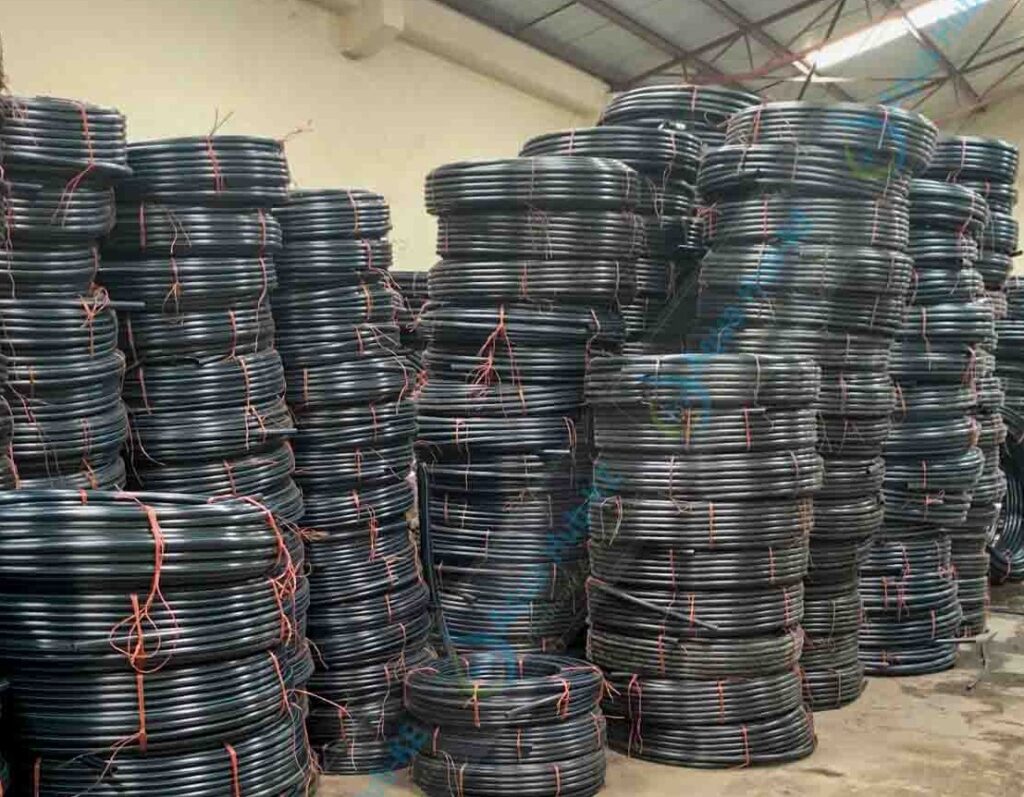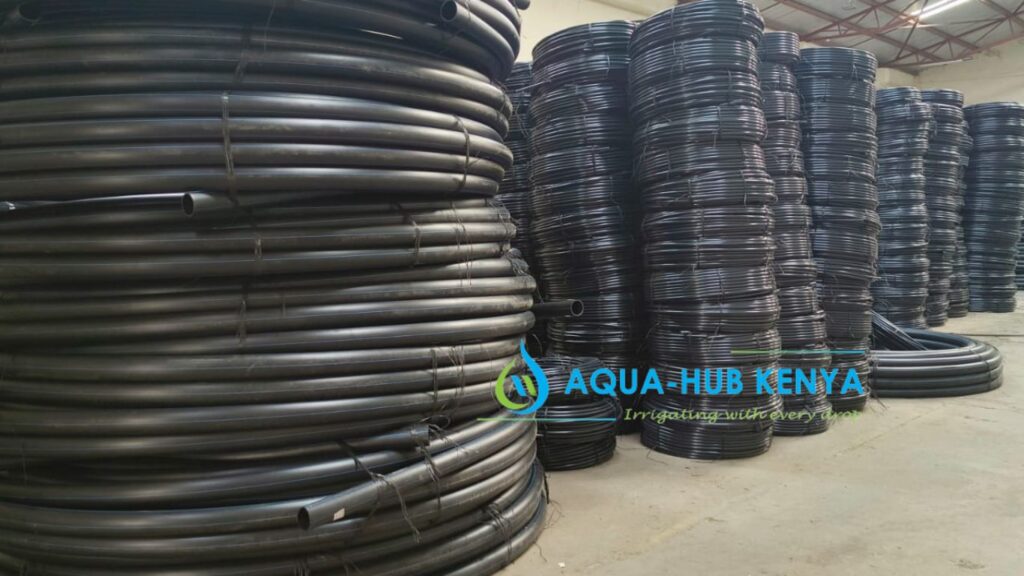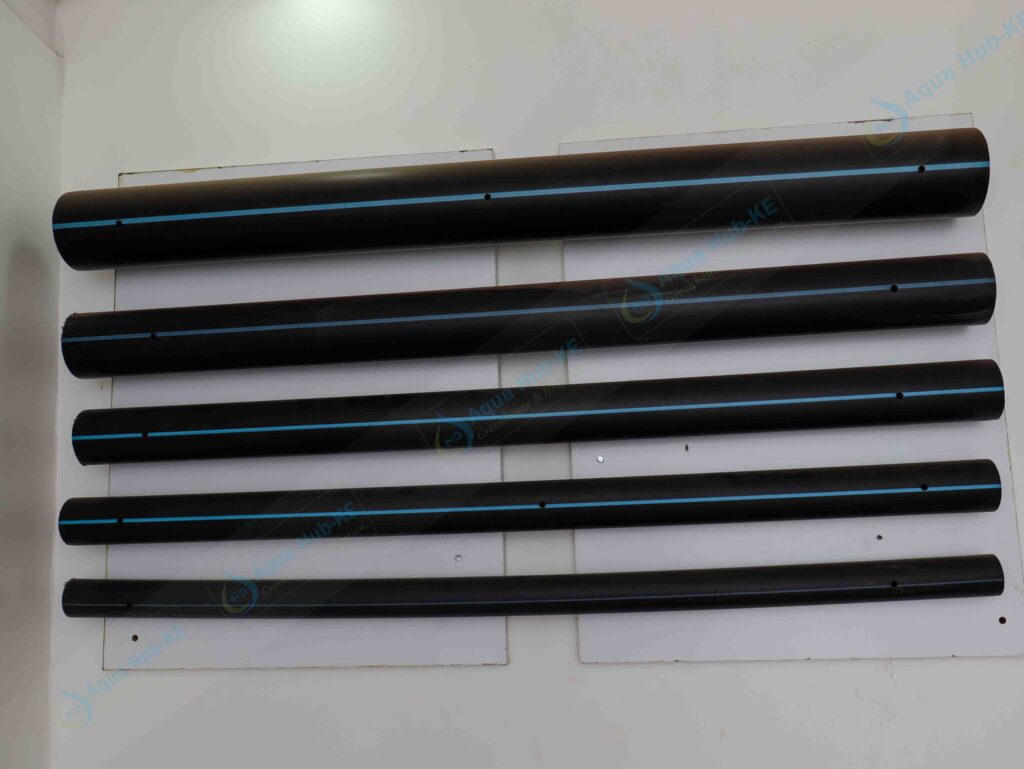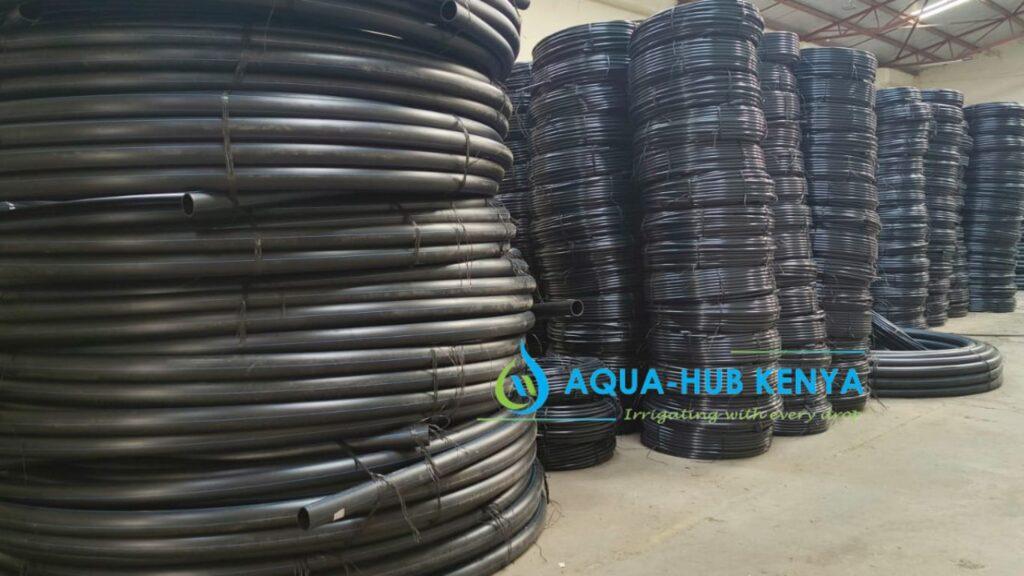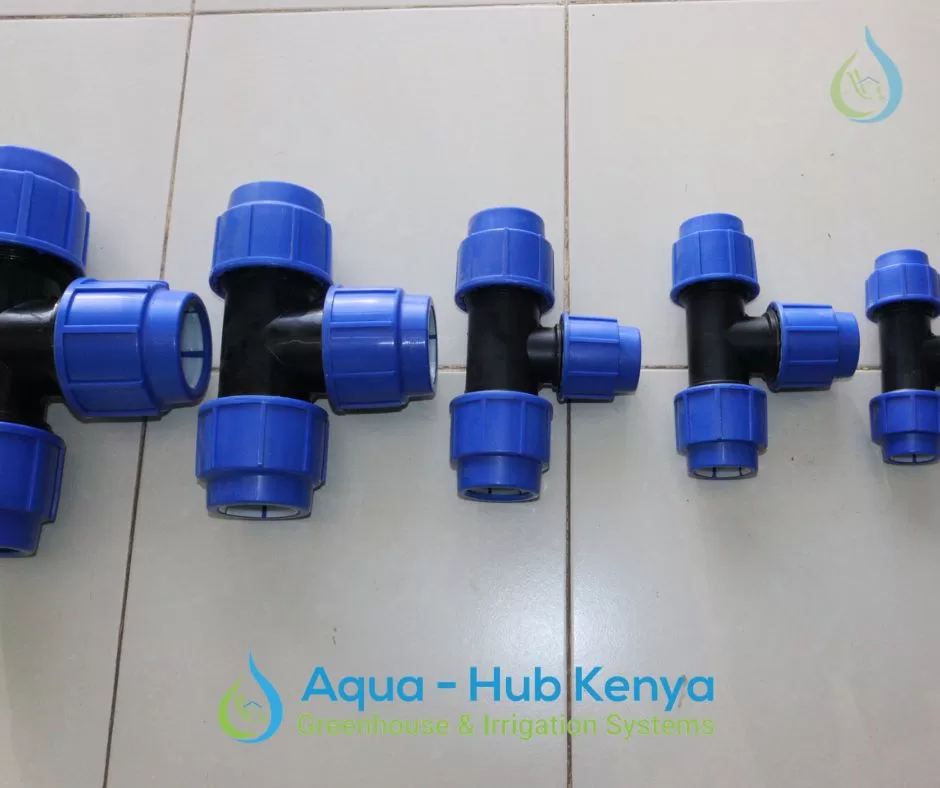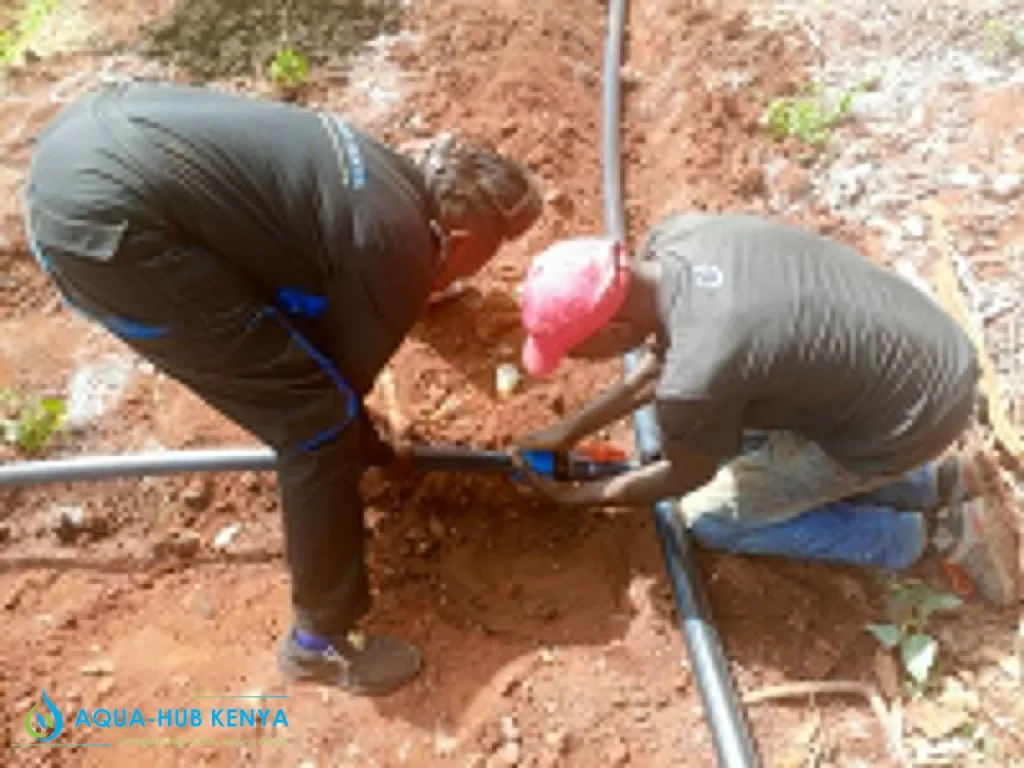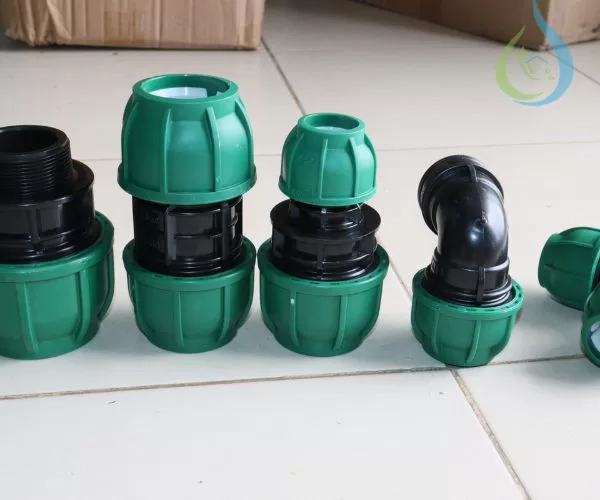Blog
HDPE Pipe Sizes and Prices in Kenya
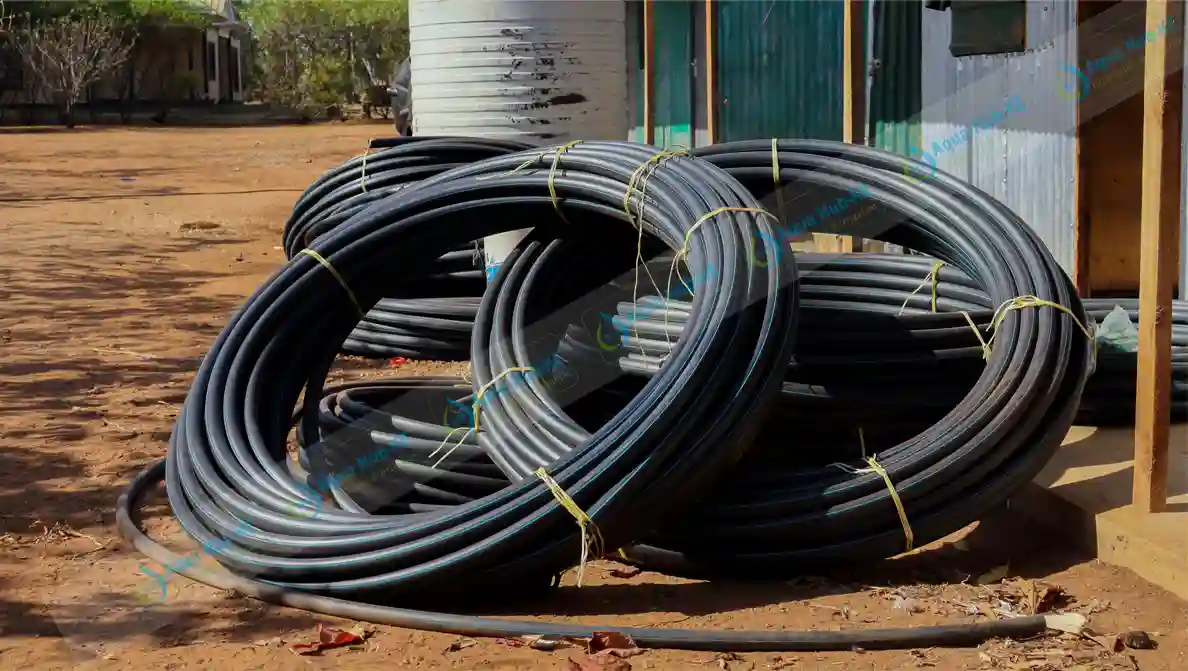
HDPE Pipes are used to transport clean water, irrigation water and gas or industrial chemicals. Our wide range of HDPE Pipe sizes ranging from 16mm to 110mm are available on order at prices ranging from KES 1,700 to KES 40,000. We deal with quality HDPE Pipes of pressure rating PN6 to PN25 tailored to meet the pressure and flow requirements of your applications.
Call 0790719020
Our HDPE Pipe Sizes and Prices in Kenya
|
HDPE Pipe Diameter |
Price (USD) |
|
16 mm |
$ 14 |
|
20 mm |
$ 22 |
|
25 mm |
$ 27 |
|
32 mm |
$ 35 |
|
40 mm |
$ 59 |
|
50 mm |
$ 86 |
|
63 mm |
$ 132 |
|
75 mm |
$ 194 |
|
90 mm |
$ 271 |
We are more than a reliable HDPE Pipes Supplier, we handle installation of irrigation systems and water supply projects
Call 0790719020.
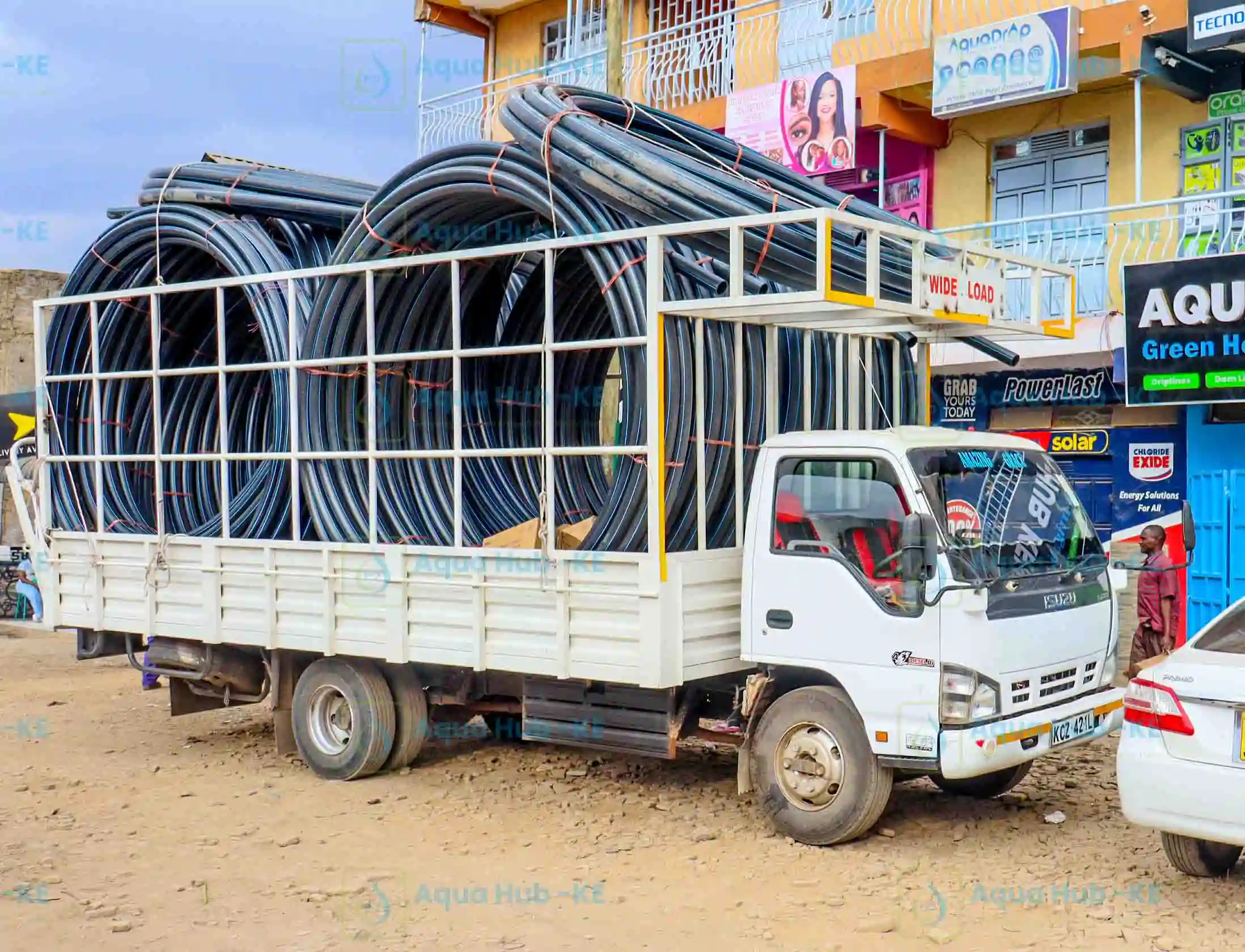
Delivery of HDPE Pipes to site for installation
HDPE Pipe Sizes in Kenya
HDPE Pipes are available in wide range of diameter sizes which may go up to 630 mm. The HDPE Pipe sizes commonly used in irrigation are:
- 16mm
- 20mm
- 32 mm
- 40 mm
- 50 mm
- 63 mm
- 75mm
- 90 mm
- 110mm
The length of HDPE pipes of diameter 20mm to 110 mm is often 100m long. As the diameter exceeds 110mm the standard length reduces.
Other HDPE Pipe sizes available include:
- 125mm
- 140 mm
- 160 mm
- 180 mm
- 200 mm
- 225 mm
- 310 mm
- 630 mm
HDPE Pipes PN8
These are HDPE Pipes of Pressure nominal or maximum pressure of 8 bar. They are used for safe distribution of water, gas and other fluids.
HDPE Pipes Sizes : Common Features
- They are often black with blue or yellow stripes. Blue stripes are for carrying clean or irrigation water. Yellow striped pipes carry hot water.
- They have smooth inner surfaces, which help reduce friction inside the pipe to avoid pressure loss.
- They can handle pressure, be installed underground or above ground, and be used for liquids (water, sewage) and gases.
- HDPE pipes are made from 100 % virgin material, are UV treated and are being used widely for irrigation, water supply and drainage.
Why Choose HDPE Pipes in Kenya
HDPE pipes often stand out in numerous applications because of:
Flexibility and ease of handling. HDPE pipes are lighter than many metal alternatives so transportation and installation can cost less. Because they are flexible, they can accommodate curves, or terrain shifts better than rigid pipes.
Durability and corrosion / chemical resistance. They don’t rust like steel or degrade like some concrete pipes in certain environments. HDPE is chemically inert against many acids, bases, salts and does not support biological growth or scale build-up as much as metal or older plastic pipes.
Leak reduction. Because of the joining techniques the pipe connection is secure thus no leaks.
Long service life. 50 years while still in good condition.
Smooth internal surface. This gives lower friction losses, which means in pumping systems you may spend less energy.
Suitable for challenging installations. Trenchless layouts are compatible with HDPE because of the flexibility and strength of the pipe.
Lightweight, making handling easier. Especially useful in remote or difficult terrain.
Limitations of HDPE Pipes
Quality installation matters. If the fusion joints aren’t done properly the system can fail prematurely.
Temperature limitations. While HDPE has a decent range, extremes of heat or where fire resistance is required may push its limits. For example, some materials note service up to ~80 °C or more but not the same as certain metals.
Proper design and bedding must be used. For buried installations you still need good trench design, bedding, backfill HDPE isn’t a substitute for poor civil design. For example, the Kenya specs reference bedding concrete around the pipe under certain conditions.
How to pick HDPE pipe sizes, ratings, standards
The approach to use when purchasing HDPE Pipes is a careful consideration of the following factors:
- Diameter Size. HDPE pipes sizes are diameters from 16 mm to 800mm.
- Pressure rating (PN). HDPE Pipes are available in pressure ratings of PN6, PN8, PN10, PN12.5, PN16 and PN25.
- Material grade. For example, some HDPE pipes use a resin grade like PE 100, which has higher stress resistance.
Applications that Rely on HDPE Pipes
Water supply systems. For portable water distribution, reticulation networks. Because of the chemical safety, smooth surface and corrosion resistance.
Irrigation. In farm irrigation where flexible layout, long runs, and terrain shifts matter. In Kenya HDPE pipes are reliable due to their durability, ease of connection and wide range of pressure compatibility.
Sewage and drainage. For wastewater, stormwater, sub-surface drainage networks. The corrosion resistance and flexibility make it advantageous.
Oil & gas, mining, industrial fluid/gas transfer. HDPE is used in chemical plants, for compressed gases, slurries, because of chemical resistance and durability.
HDPE Pipes Jointing Methods
Heat or butt fusion: Two pipe ends are heated, then fused together to form a joint. The result: a joint that in many cases is as strong as the pipe material.
Electrofusion: A fitting with embedded heating element is used to join pipes or fittings. Useful for complex layouts.
Compression fittings: For smaller diameters or specific applications. But note: some standards disallow saddles or adapters unless approved for the class.
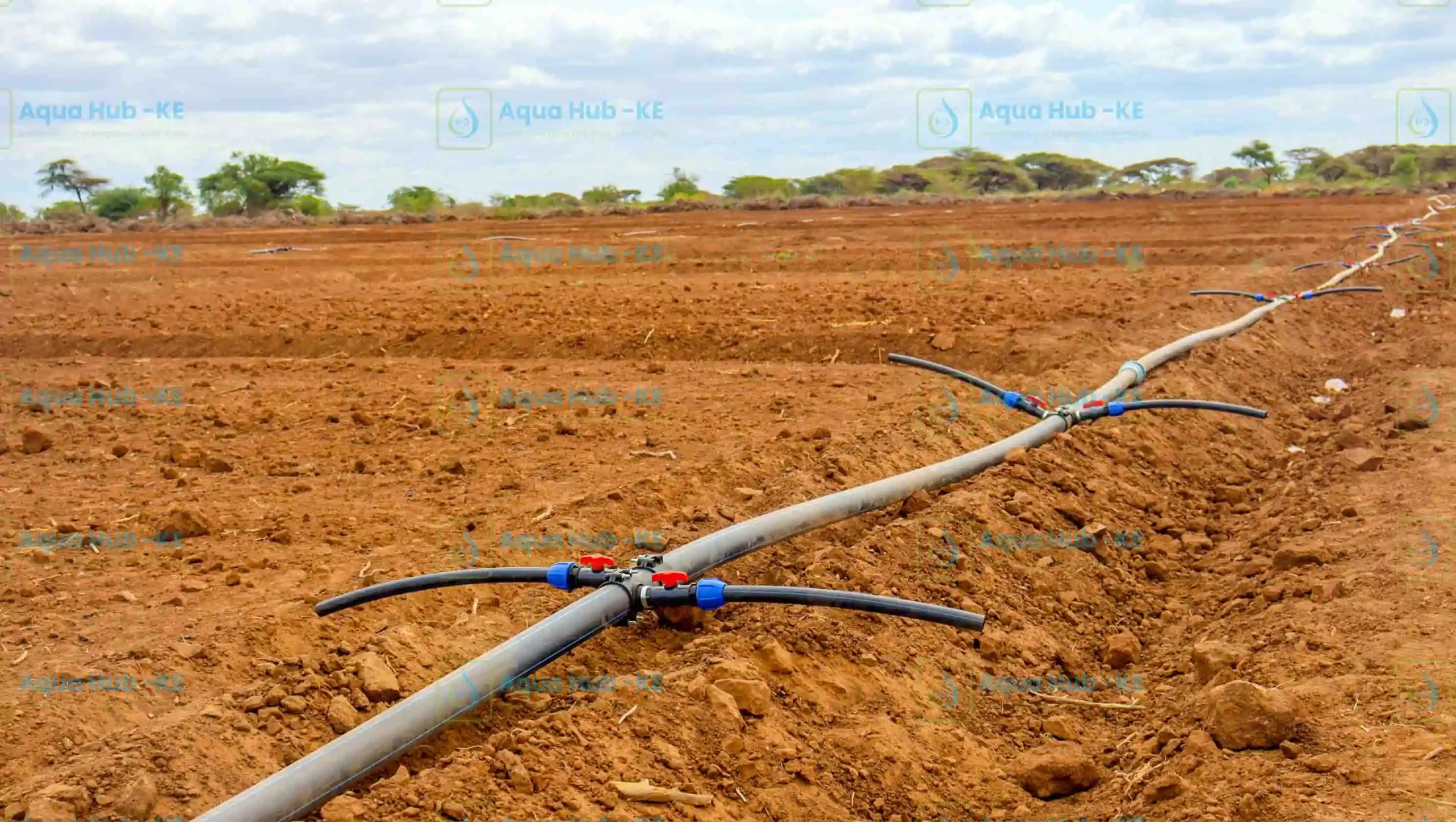
We installed a furrow irrigation system in Garissa using HDPE pipes
HDPE Pipes Installation
Trenching/backfill. Even though HDPE is flexible, you must install proper bedding material, backfill carefully, avoid sharp rocks, ensure correct alignment and cover depth
Above ground or exposed installations. If the pipe runs above ground, ensure UV protection, correct support spacing, allowance for expansion/contraction etc.
Testing and commissioning. Pressure testing, leak testing must be done per standard.
Key performance metrics of HDPE Pipe Sizes
All our HDPE pipe sizes exhibit the following metrics.
- HDPE pipes can last 50 years or more
- Temperature range: some pipes can operate from –40 °C up to 80 °C.
- Pressure rating: PN6 to PN25.
- Flow efficiency: smooth inner walls reduce friction loss. HDPE retains flow capacity over time.
Cost-effectiveness of HDPE Pipes
HDPE Pipes are cost-effective because they require less joints and works while laid on the ground surface. Lower maintenance cost due to corrosion/scale resistance, fewer leaks mean less water loss or rehabilitation cost.
Comparison of HDPE vs Other Pipes
HDPE Pipes vs PVC (Polyvinyl Chloride
HDPE tends to be more flexible, more durable under shifting ground, corrosion resistant whereas PVC is more rigid and may crack if the ground moves. Also, HDPE is more suitable for trenchless installations.
HDPE Pipes Vs Steel or iron Pipes
Steel can corrode, needs cathodic protection, heavier, more complex to install, especially in remote areas. HDPE is not affected by rust and biofouling.
Installation method: With HDPE the installation technique, jointing method, quality control matters a lot. If those are lacking, any pipe material may underperform.
Considerations for Selecting the Right HDPE Pipe Sizes
When you go to specify or purchase HDPE pipe, consider the following list:
- Is the manufacturer/reseller reputable? What quality control do they have?
- Confirm the resin grade (PE80, PE100) and certification for the pipe.
- Are the pressure ratings (PN) correct for your system? Are wall thickness and diameter correct for your application?
- Are the jointing methods and training available locally (fusion equipment, trained personnel)?
- Ask about UV-resistance if pipe will be exposed.
- Ensure proper trench design, bedding, backfill in your project. HDPE doesn’t eliminate those civil requirements.
- Plan for installation: long-length coils reduce joints; fewer joints has less potential leakage.
- Look at lifecycle cost, not just material cost.
- Consider future maintenance, accessibility, ability to inspect or repair joints.
- For buried installations: check for protection against external loads, traffic loads, soil conditions, changes in temperature.
Is HDPE right for your project?
Here’s what you should ask yourself:
- What is the application (water, irrigation, sewer, gas)?
- What are the pressure and temperature conditions?
- How accessible is the site, what is the terrain/ground condition?
- What are long-term risks (corrosion, ground shifts, UV exposure)?
- What is the installation skill level locally?
- What is your budget both initially and overtime?
If your system requires long-life, fewer leaks, corrosion resistance and installation flexibility, HDPE is very likely the right call. If the conditions are extreme then you may need to compare with other materials or ensure you use the highest-grade HDPE and correct design.
Frequently Asked Questions
What is an HDPE Pipe?
HDPE pipes are type of Pipes manufactured from High Density Polythene material with UV resistant resin. These pipes are utilized in water supply, chemical or gas transport.
What is the color code for HDPE pipe?
Blue color for water supply and yellow for gas.
What size are HDPE pipes in Kenya?
HDPE Pipes exist in sizes of 16mm, 20mm, 32 mm, 40mm, 50mm, 63mm, 75mm, 90mm, 110mm, 125mm, 140mm, 160mm, 180mm, 200mm, 225mm, 310mm up to 800mm.
How Much do HDPE Pipes Cost in Kenya
- 16mm – KES 1,700
- 20 mm – KES 2800
- 25mm – KES 3,500
- 32mm – KES 4,500
- 40mm – KES 7,500
- 50mm – KES 11,000
- 63mm – KES 17,000
- 75mm – KES 25,000
- 90mm – KES 35,000
- 110mm – KES 40,000
What is the length of HDPE Pipe Roll?
The length of HDPE pipes is either 100m, 50m or 12m.
What are the Common uses of HDPE Pipes?
HDPE is a reliable choice for many applications: water supply, irrigation, drainage, even gas and industrial services especially when you need durability, flexibility, and reduced maintenance over the long term.
IS HDPE Pipe Suitable for Sprinkler Systems?
Yes. HDPE Pipes are preferably used as the mainline connection pipes and sometimes risers or delivery pipes in sprinkler systems. Due to their wide range of pressure ratings they offer reliable water conveyance.
How does one join a 4” HDPE Pipe?
it depends on the use of the pipe. For low pressure water connections or irrigation systems, use compression fittings to join HDPE pipes. However, for high pressure water connections, butt fusion would be more ideal to ensure safety and zero leakage risks.
How long will HDPE Pipes last?
50 years or more.
How Many types of HDPE Pipes are there?
They are categorized into PE63, PE80, PE100 as per the material grade.

